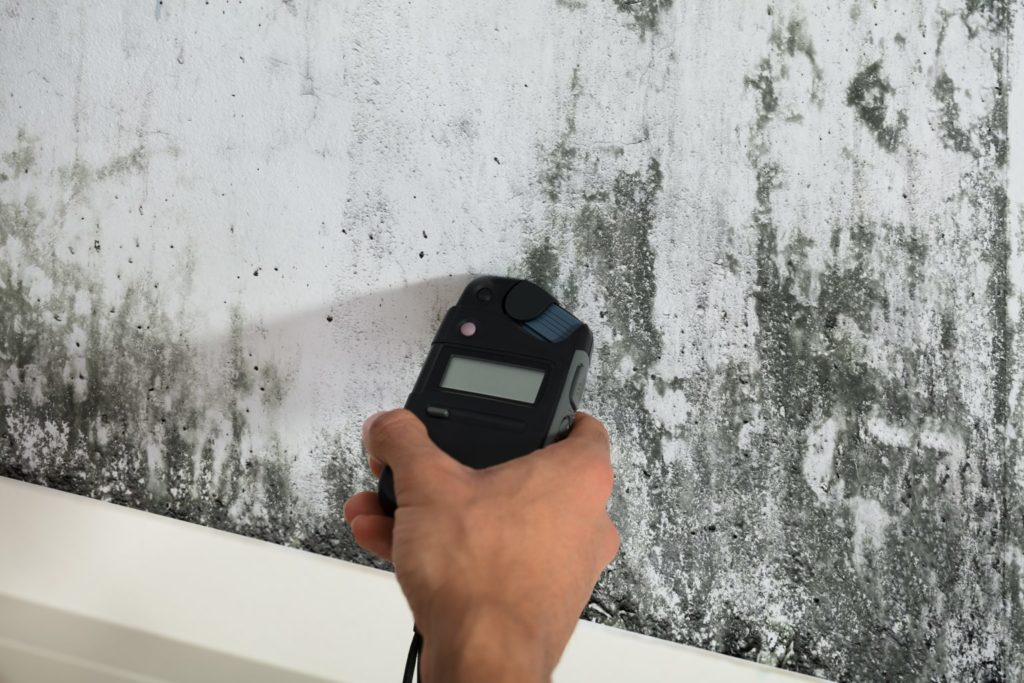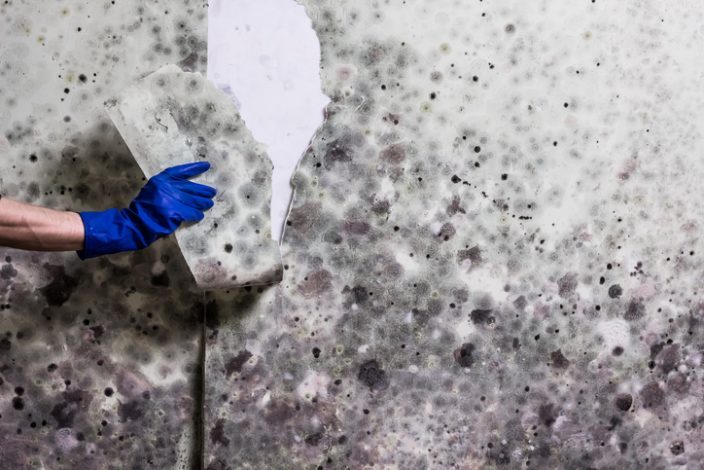Accessing Regional Post Remediation Mold Testing Near Me
Wiki Article
Specialist Tips for Blog Post Mold Remediation Success
In the realm of mold removal, successfully removing mold is just half the battle; real difficulty depends on avoiding its reappearance. Post-remediation efforts play a critical role in making certain a mold-free environment in the long-term. By adhering to skilled ideas and best methods, individuals can guard their spaces versus mold and mildew resurgence and keep a healthy and balanced interior atmosphere. It is in this stage of the removal procedure that focus to information and aggressive steps absolutely make a distinction.
Screen Moisture Levels Regularly
Normal surveillance of humidity levels is vital in ensuring the performance of post mold remediation efforts. After finishing mold remediation procedures, keeping optimal moisture levels is crucial to stop mold re-growth and make certain a healthy and balanced indoor setting. Monitoring humidity levels enables for early detection of any spikes or fluctuations that might potentially result in mold resurgence. High humidity degrees above 60% create a helpful atmosphere for mold to flourish, making regular keeping an eye on a proactive action to protect against any type of future mold issues - Post remediation mold testing near me.Furthermore, establishing a regular schedule for humidity checks, especially in risky areas such as cellars, cooking areas, and restrooms, is an aggressive technique to mold avoidance. By continually keeping an eye on humidity levels, residential or commercial property owners can effectively mitigate the risk of mold reoccurrence and maintain a healthy and balanced indoor atmosphere post-remediation.
Conduct Thorough Inspections Post-Remediation
Complying with the completion of mold and mildew removal procedures, it is imperative to carry out thorough evaluations to validate the efficiency of the remediation process. These post-remediation assessments are vital in ensuring that the mold concern has actually been successfully attended to and that there is no reappearance or continuing to be mold development. Examinations should be performed by qualified experts who have competence in recognizing mold and mildew and assessing indoor air high quality.Throughout these evaluations, various approaches such as visual assessments, air sampling, and surface area tasting may be used to extensively evaluate the remediated areas. Visual analyses entail an in-depth assessment of the properties to inspect for any type of visible indications of mold and mildew growth or water damages. Air sampling helps in establishing the airborne mold and mildew spore degrees, while surface area sampling can detect mold particles on surfaces.
Implement Appropriate Ventilation Approaches
After guaranteeing the efficiency of the mold removal process via detailed assessments, the next critical action is to concentrate on applying appropriate ventilation strategies. Appropriate ventilation is essential in preventing mold and mildew reoccurrence by regulating wetness degrees and advertising air flow. To achieve this, it is suggested to utilize exhaust fans in locations prone to high moisture, such as kitchen areas and bathrooms. In addition, opening doors and home windows when weather click to investigate permits can aid enhance air movement and reduce wetness buildup. Air purifiers and dehumidifiers are also beneficial tools in keeping optimal interior air top quality.
Correct air flow not just help in stopping mold development yet likewise adds to the general wellness and comfort of residents. By ensuring adequate air flow throughout the residential or commercial property, you can decrease the danger of mold regrowth and develop a much healthier living environment. Regular upkeep of ventilation systems, including cleaning and filter substitutes, is essential to sustaining reliable air flow. Consulting with HVAC experts can supply additional understandings into optimizing ventilation strategies for your particular residential or commercial property needs.

Usage Mold-Resistant Products for Repairs
To boost the long-lasting effectiveness of mold and mildew remediation initiatives, including mold-resistant materials for repair work is crucial in minimizing the threat of future mold and mildew growth. Mold-resistant products are designed to stand up to dampness and prevent mold development, making them an important choice for locations prone to wetness and moisture. When repairing areas impacted by mold and mildew, using materials such as mold-resistant drywall, mold-resistant paints, and mold-resistant caulking can aid stop mold reoccurrence.Mold-resistant drywall is a superb choice to typical drywall in areas like cellars and washrooms where moisture degrees are higher. This type of drywall has a special finishing that withstands mold development even when subjected to damp problems. In addition, using mold-resistant paints containing antimicrobial agents can even more prevent mold and mildew advancement on ceilings and wall surfaces.
In areas where dampness prevails, such as kitchens and restrooms, making use of mold-resistant caulking around sinks, bathtubs, and windows can assist seal out water and avoid mold and mildew from holding in fractures and crevices. By purchasing these mold-resistant products Get the facts during fixings post-remediation, you can substantially lower the possibility of future mold problems and maintain a much healthier interior environment.
Maintain Sanitation and Address Water Issues
After mold and mildew remediation, it is critical to maintain a clean atmosphere to avoid the regrowth of mold. Leakages, water intrusion, or high humidity levels can create the perfect reproduction ground for mold and mildew, so it is important to deal with any water-related troubles quickly.To preserve tidiness, take into consideration using HEPA filters in vacuums and air cleansers to catch mold spores and prevent their blood circulation airborne. Making certain correct ventilation in locations prone to moisture buildup, such as shower rooms and kitchen areas, can assist maintain humidity levels in check. By remaining alert regarding sanitation and attending to water issues immediately, you can effectively prevent mold and mildew reinfestation and maintain a healthy and balanced indoor atmosphere.
Verdict

In the world of mold and mildew remediation, efficiently removing mold and mildew is just half the battle; the true challenge exists in avoiding its reappearance. After completing mold and mildew removal procedures, keeping optimal humidity degrees is critical to avoid mold re-growth and guarantee a healthy interior setting. High humidity levels over 60% produce a helpful environment for mold to flourish, making regular keeping track of a positive action to prevent any future mold concerns.
To boost the long-term effectiveness of mold and mildew remediation initiatives, including mold-resistant products for repair services is crucial in alleviating the danger of future mold growth. After mold and mildew removal, it is critical to keep a clean atmosphere to stop the regrowth of mold and mildew.
Report this wiki page